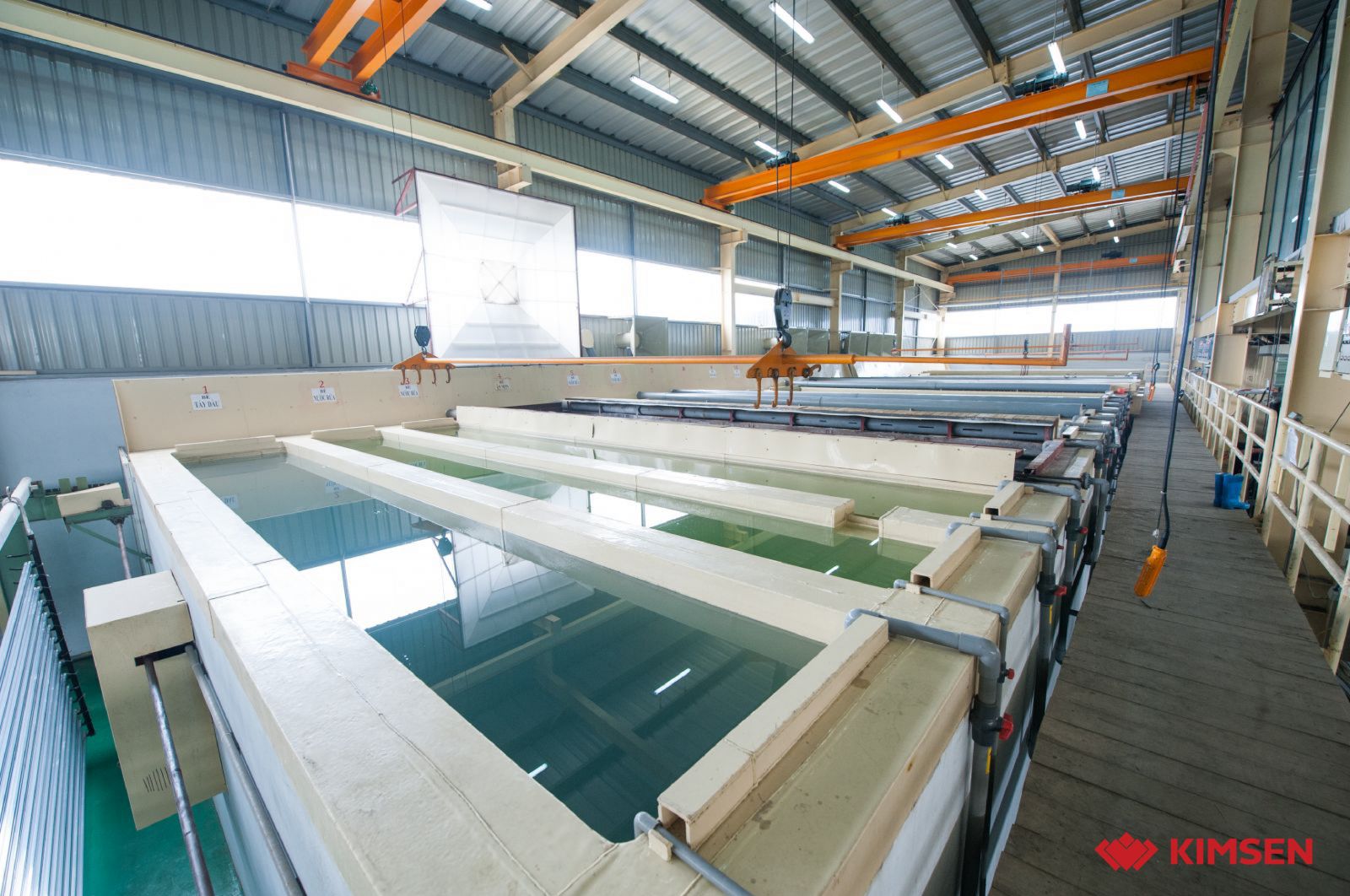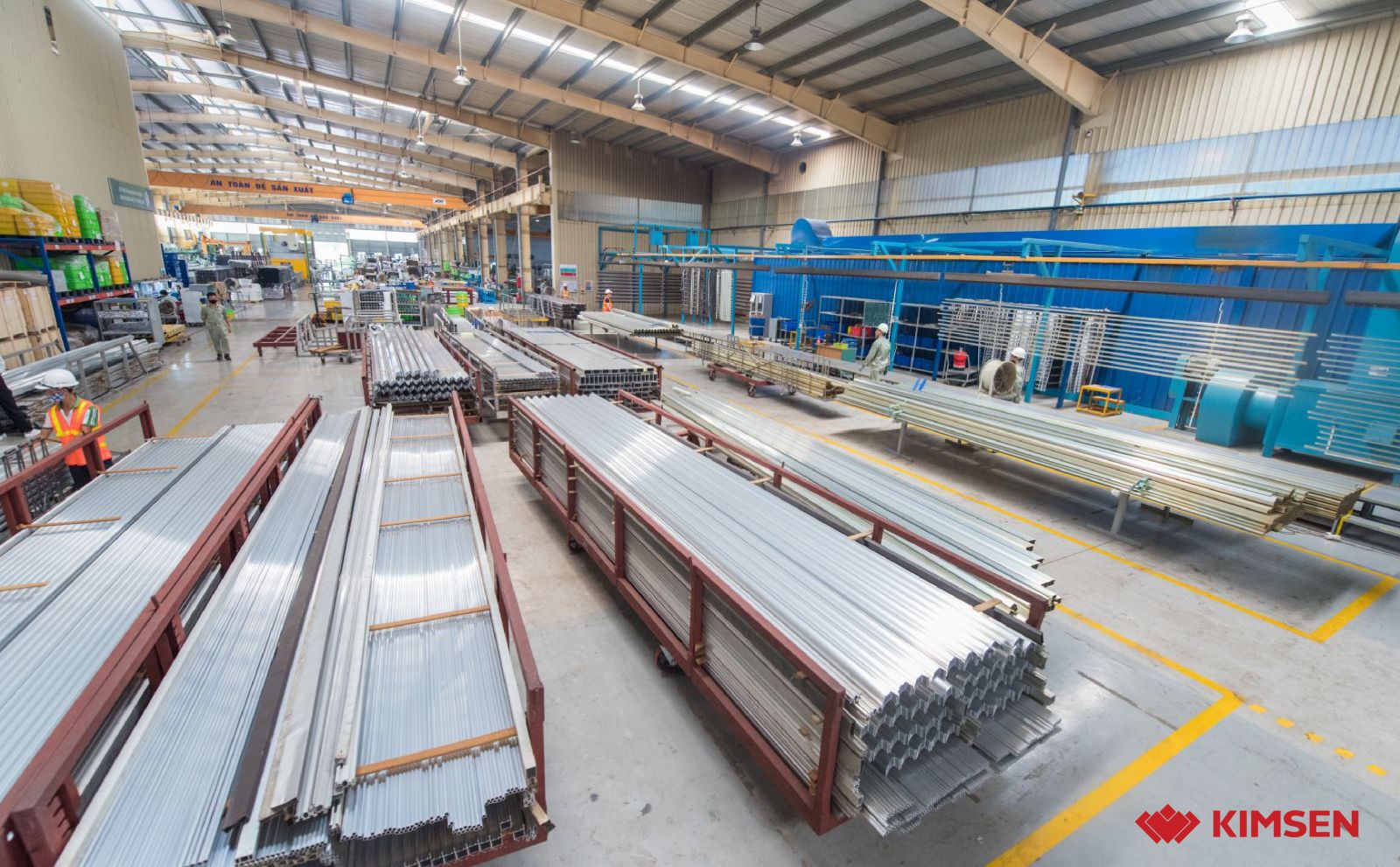Anodizing vs. Powder Coat: How to Choose the Right Aluminum Finish
What is Anodizing?
Aluminum naturally develops a thin layer of oxide on its surface when exposed to air. This oxide layer is passive, meaning it no longer reacts with the surrounding environment — and it protects the rest of the metal the elements.
 Anode coating line at KIMSEN
Anode coating line at KIMSEN
Anodizing is a surface treatment for aluminum parts that takes advantage of this oxide layer by thickening it. Technicians take the aluminum piece, such as an extruded part, submerge it into an electrolytic bath, and run an electric current through it.
By using aluminum as the anode in the circuit, the oxidation process occurs on the surface of the metal. It creates an oxide layer thicker than the naturally occurring one. This artificial oxide layer enhances the properties of the naturally-formed oxide layer, such as resistance to wear and corrosion, increased heat dissipation, and improved glue and primer adhesion. The resulting surface is also perfect for adding dyes, and the finishing service provider can recycle the chemicals in the electrolytic bath for future anodizing projects.
What is Powder Coating?
Powder coating is another type of finishing process used on a wide variety of metal products. This process results in a protective and decorative layer on the surface of the treated product.
 Powder coating lines at KIMSEN
Powder coating lines at KIMSEN
Unlike other coating applications (e.g., painting), powder coating is a dry application process. No solvents are used, making powder coating an environmentally friendly alternative to other finishing treatments. After cleaning the part, a technician applies the powder with the help of a spray gun. This gun applies a negative electrostatic charge to the powder, which makes it attracted to the grounded metal part. The powder remains attached to the object while it’s cured in an oven, turning the powder coat into a uniform, solid layer.
The resulting coating is very durable and attractive. You can apply it in thick layers and a wide variety of colors and textures. If you’d like to know more about the process, please see our article on powder coating.
Anodizing vs. Powder Coating: How They Compare
The following table shows a direct comparison between anodizing and powder coatings as surface finishing processes.
|
Anodizing |
Powder Coating |
|
|
|
|
|
|
|
|
|
|
|
|
|
|
Typical Applications for Each of These Processes
Product designers most commonly use anodizing for aluminum products that require superior corrosion and wear resistance. They often select it for structural and architectural applications in which they desire an attractive finish, but protection is paramount. You will also find anodized surfaces in appliances, furniture, sporting goods, electronic equipment, and automotive components for this reason.
 Anodizing products (Image source: Internet)
Anodizing products (Image source: Internet)
You will often see powder coatings in outdoor equipment and parts that require brilliant colors and a resistance to fading along with excellent durability. In architecture, it’s common to see aluminum doors/windows, facades, bathroom fixtures, and metal gutters treated with powder coatings. Other typical applications of powder coatings include household appliances, automotive parts, lawn equipment, playgrounds, and fire hydrants.
|
Anodizing
|
Powder coating
|
 Powder coating products (Image source: Internet)
Powder coating products (Image source: Internet)
Which Aluminum Finish Should You Choose?
Your choice of surface finish will ultimately depend on the application of your product. Both anodizing and powder coating are very environmentally friendly options for aluminum surface treatment.

Anodizing is ideal if you want tight dimensional margins, outstanding corrosion and wear resistance, and an attractive metallic look. If your aluminum product needs to dissipate heat, or you’ll subject it to glue or primer application, it is preferred.
A powder coating might be the solution if you’re looking for vibrant colors or unique textures that will last, even when exposed to the elements. It also offers relatively good protection at a lower cost than anodizing.
>> Read more: KIMSEN's surface treatment services
Source: gabrian.com


 Chia sẻ:
Chia sẻ: